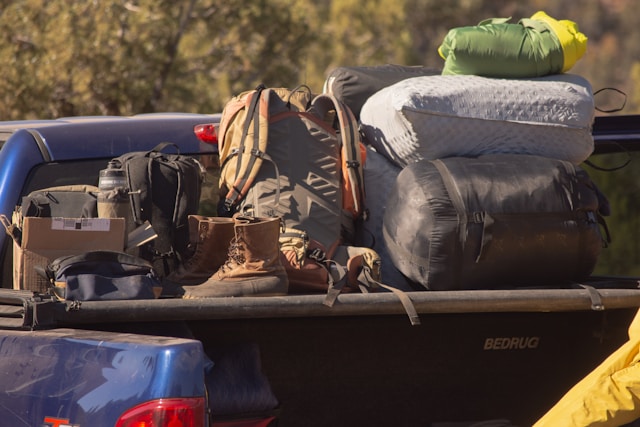
Car camping has become a popular choice for travel and lifestyle. In the digital age, an increasing number of people are sharing their RV experiences through various digital platforms, garnering significant attention and followers. The presence of these digital nomads in car camping allows more individuals to understand and experience the charms of RV living. Through digital platforms, they offer inspiration, practical information, and community support, drawing more people into this trend, even becoming a new choice for digital nomads.
If you’re into exploring nature, seeking adventure, simplifying your lifestyle, or simply intrigued by RV living, the stories and experiences of these notable digital car campers offer endless inspiration and exploration possibilities. So, let’s explore this new trend of RV living together, following these digital influencers in car camping, and embark on a journey filled with freedom, adventure, and inspiration!
Let’s take a look at what you need for car camping in terms of equipment and living setups:
1. Finding Campsites: You need to know where you can camp nearby. Apps like Campendium or iOverlander can help you find campsites of various kinds, from county parks by a lake to national forests with tables, fire pits, and fellow campers, or even RV parks with amenities like electricity.
2. Sleeping System: You’ll need a sleeping setup, which could be an air mattress and sleeping bag, perhaps using a jacket as a pillow. Depending on your vehicle’s setup, you might stretch out in the trunk, sleep in the backseat, or fold down passenger seats. Alternatively, a budget tent with your mattress, sleeping bag, and pillow could suffice.
3. Sanitation Solution: You need a system for handling waste, whether using campsite facilities, public restrooms along your route, or carrying essentials like toilet paper and a small shovel for remote areas.
4. Weather-Appropriate Clothing: Pack clothes that can layer and dry quickly, suitable for varied weather conditions. Wool garments are great for warmth. You don’t need expensive gear; make do with what you have, like a few changes of clothes and adaptable layers.
5. Food Preparation: Carry food items based on your camping duration and cooking preferences, whether using a cooler, stove, pots, utensils, or opting for simpler non-perishable snacks.
The description of diane schmiane’s video “You Only Need 6 Car CAMPING ESSENTIALS to Go Now” is as follows:
“If you’re just starting out with camping, make sure to bring your smartphone and choose a place where you can seek help if needed. Start by camping for one night, especially if you’re a beginner. Try camping near your home for a night. You can even camp in your own driveway. The first time I camped in a snowstorm, it was in my own driveway because I wanted to make sure I wouldn’t freeze to death. If I really needed to, I wanted to be able to run into a warm house for safety. If you plan on sleeping in your car, test out your sleeping system in your own driveway to see if it works. Then, venture a little further away, maybe half an hour or an hour from home, but not too far. This way, if things go wrong, you can retreat back home and try another day. So, these are the essentials you need to start camping and adventuring this spring. It’s a very budget-friendly way to travel. I understand that inflation is tough, and people have budget constraints. Sometimes it’s hard to be away from family, friends, or responsibilities. But if you can get away for even just one night to a nearby place, it will feel like an escape from the hustle and bustle, and you’ll come back feeling refreshed, energized, and ready to face life again. That’s been my experience… being in nature, surrounded by plants, animals, sounds, and wind, there’s a healing feeling. It’s a way for us to reconnect with our roots. Start planning now. Don’t wait.”
Let’s take a look at the advantages and considerations of car camping so that you can start your digital nomad life in a car with more fun, if it’s something you’re open to.
Advantages:
1. Flexibility and freedom: Car camping offers great flexibility and freedom. You can choose to go anywhere, change your itinerary, or stay longer at a particular place. You can explore various destinations, seek adventure, and discover new sights.
2. Cost-saving accommodation: Compared to traditional hotel stays, car camping can save you money on accommodation. Instead of paying high hotel fees, you can opt to stay overnight at campsites, parking lots, or other authorized camping areas.
3. Proximity to nature: Car camping brings you closer to nature. You can choose to camp in beautiful scenic areas and enjoy the natural beauty and tranquility.
4. Self-sufficiency: You can carry essential equipment and supplies in your car, such as kitchen utensils, sleeping bags, and camping gear, allowing you to be self-sufficient. This way, you can cook your own meals, avoid dining expenses, and tailor your diet according to your preferences.
5. Reduced luggage: You can carry necessary items with you, eliminating the hassle of packing and unpacking luggage. This makes traveling more relaxed and convenient.
Considerations:
1. Limited space: Car camping typically offers limited space, especially in smaller RVs or vans. This may restrict your freedom of movement inside the vehicle, particularly during long-term trips or when sharing the space with multiple people.
2. Limited amenities: Compared to traditional accommodations, car camping often comes with limited amenities. For example, you may have to rely on limited shower facilities, toilets, and washing spaces. This may be inconvenient for some individuals.
3. Maintenance and operational costs: Owning and maintaining a vehicle suitable for camping can involve certain costs and efforts. You need to consider expenses related to fuel, maintenance, insurance, and vehicle repairs.
4. Social interaction and solitude: Car camping may result in a certain level of social interaction and solitude. Unlike traditional hotels, you may not have the opportunity to establish close social connections with other travelers or locals, especially in remote areas or sparsely populated regions.
5. Infrastructure limitations: In some places, you may encounter limitations in infrastructure, such as availability of parking lots or campsites, power supply, internet connectivity, and more. This may have some impact on your travel plans and comfort.
I hope this article provides you with another perspective to explore nature, seek adventure, and simplify your way of life through your digital nomad journey!
This article references the following video sources:
If you have more questions or need assistance with tax-related matters, feel free to leave a message or add our official WeChat account to access a range of professional services, including tax planning, consulting, immigration, and digital nomad assistance





